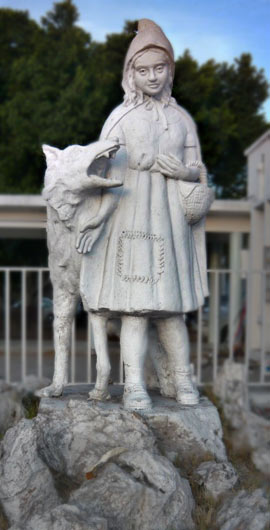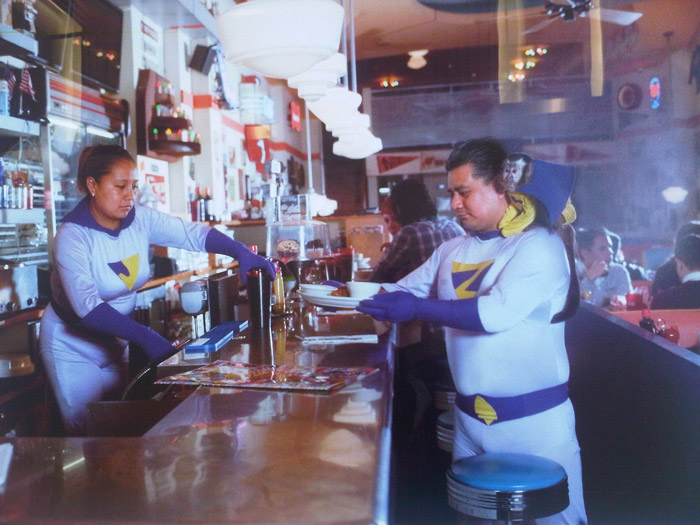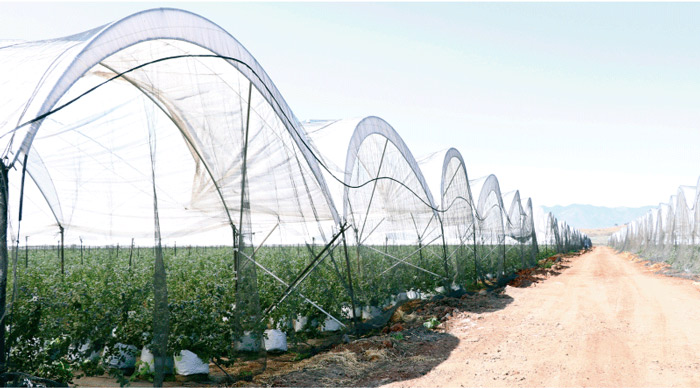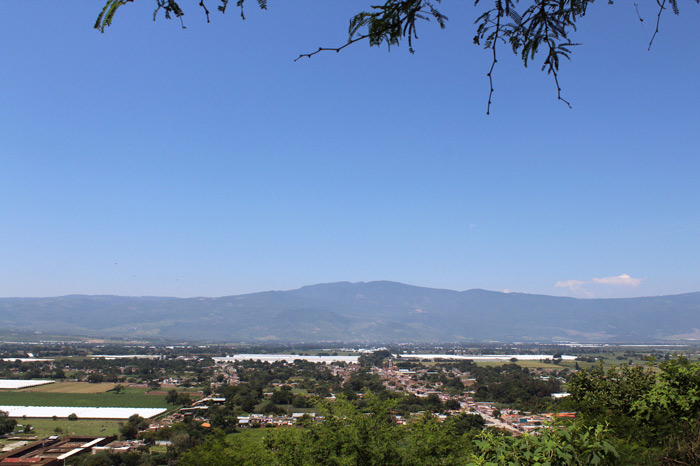Hole in the Clouds
Dec 8, 2009


It seems straightforward enough: juxtapose innocence and danger, and there it is, Little Red Riding Hood. Also, I think, sculptors must like to do wolves. The bronze interpretation here is in Munich, the stone carving in Hermosillo, Mexico.
Germany
children
sculpture
Little Red Riding Hood
Hermosillo
Munich
Mexico
Jul 1, 2010

During a week's vacation on an island in the Yucatan Strait near Cancun, Mexico, Carol Stack posed for a picture at sunset.
Carol Stack
sunset
Mexico
Cancun
Yucatan Strait
waterscape
(Image credit: Shirley McConahay)
Oct 22, 2010

If you drop the first two letters of the name of the nation of Mexico, you get Xico, the name of several towns and landmarks around the country. There is, for example, the small hill town of Xico near Veracruz, where it is said that people do very little besides growing coffee and hosting bullfights. And here we see two other Xicos: a volcanic crater and the fast-growing city that surrounds it.
Xico volcano sits at the extreme southern end of the Mexico City megalopolis. For a geologically significant chunk of time, this area was underwater, drowned by Lake Chalco. The lake began to dry out in the 1300s, and Aztec fishermen settled along its coastline hereabouts. In the nineteenth century, the government drained the lake entirely; the fishermen were awarded communal land grants and told to become farmers.
Farming became intensive in the 1970s, when corporate agriculturists and desperate landless peasants struck illegal or quasi-legal deals with the communal organizations and wrested control of the rich volcanic soil. Thousands and thousands of families poured into the region, hoping for work. Farmers climbed over the rim of the volcano and plowed fields inside the crater. Xico the town sprawled right up to the ramparts of Xico the crater and appears likely to soon engulf it; in 2005, the population of the municipality was 330,000.
The urban fringes seen here lack the services and amenities taken for granted twenty miles away in downtown Mexico City. Xico's roads are mostly unpaved, schools are few and far between, and the people are almost all very poor. Now that NAFTA has dismantled the remains of the communal farming system, it seems to be increasingly the case that even the rich volcanic soil here in Xico is worth more as slumland than as cropland.
landscape
birdseye view
volcano
Mexico
satellite imagery
remote sensing
(Image credit: NASA Landsat 7)
May 10, 2012
 In the eye of Mexican photographer Dulce Pinzon, the superheroes of the twenty-first century include millions of Mexican immigrants in the United States, including Elizabeth and Enrique Alonso, shown here. These men and women show their super-sized courage and devotion when they leave home and family to live among strangers in a strange land, working ferociously hard at the hardest jobs, all so they can send remittances to their families back home. In 2009, when Pinzon dressed the Alonsos as The Fantastic Twins to reveal their superhero status to everybody around them at their workplace, in a Manhattan restaurant, they were sending home $400 a week to support their family in Puebla, Mexico.
In the eye of Mexican photographer Dulce Pinzon, the superheroes of the twenty-first century include millions of Mexican immigrants in the United States, including Elizabeth and Enrique Alonso, shown here. These men and women show their super-sized courage and devotion when they leave home and family to live among strangers in a strange land, working ferociously hard at the hardest jobs, all so they can send remittances to their families back home. In 2009, when Pinzon dressed the Alonsos as The Fantastic Twins to reveal their superhero status to everybody around them at their workplace, in a Manhattan restaurant, they were sending home $400 a week to support their family in Puebla, Mexico.
Mexico
work
immigrants
restaurant
monkey
Elizabeth and Enrique Alonso
(Image credit: Dulce Pinzon)
Oct 31, 2013

This year, our own Joe Stein went virtual for his Halloween disguise. He joined the Mexican national team for a critical game against Panama, near the end of which he pulled off this flying bicycle kick to generate the winning goal that qualified Mexico for next year's World Cup.
Most spectators at the game October 12 thought it was Raul Jimenez who did the magical bicycle thing. Well, boo.
Joe Stein
soccer
Mexico
hat
photoshop
kick
Jan 30, 2015
 Caught by the camera just as he finishes up his unauthorized street decor, this graffiti artist in Queratoro, Mexico, appears to have done a pretty darn good job painting a quetzalcoatl, the feathered serpent of the ancient Aztecs.
Caught by the camera just as he finishes up his unauthorized street decor, this graffiti artist in Queratoro, Mexico, appears to have done a pretty darn good job painting a quetzalcoatl, the feathered serpent of the ancient Aztecs.
streetscape
Mexico
mural
graffiti
Queratoro
(Image credit: Hector Muñoz)
Jan 12, 2018
 It's dark, chilly midwinter here in the Pacific Northwest, but the supermarket shelves are piled high with sweet summer raspberries and blueberries and blackberries. All those berries can't be coming from around here–blackberries are notorious weeds hereabouts and other berries grow readily, but the plants are dormant in the winter and yield fruit only in the summer.
It's dark, chilly midwinter here in the Pacific Northwest, but the supermarket shelves are piled high with sweet summer raspberries and blueberries and blackberries. All those berries can't be coming from around here–blackberries are notorious weeds hereabouts and other berries grow readily, but the plants are dormant in the winter and yield fruit only in the summer.
Parts of Chile are climatically similar, though of course with the seasons reversed, and so Chilean berry-growers started loading their fruit on big cargo planes and flying it all the way up here in the wintertime, to be sold at very high prices reflecting the cost of air transport.
Nowadays, however, Chilean berries are all used for juice; the air-shipping premium was just too costly to make them competitive in the fresh-berry market. The huge North American market for fresh berries–which is booming at the moment, thanks to crazes for antioxidants and smoothies–depends on locally grown fruit in the summertime and then, for literally every other month of the year, on berries grown in greenhouse-like plastic tunnels high in the mountains of the Mexican state of Jalisco.
If chilled immediately, fresh berries can have a shelf life of more than a month, which is plenty of time for refrigerated trucks to carry them from their greenhouse tunnels–tuneles–in central Mexico to virtually any grocery store in the U.S.
The high-altitude berry farms, a mile or more above sea level and cooled a bit by Pacific breezes, don't get as searingly hot in the summertime as the rest of Mexico. The semi-shade in the plastic tunnels further blunts the subtropical sun and also slows evaporation, saving water.
But even with all these adaptations, berry bushes and canes in Mexico don't behave the same way they do in, say, Oregon or New Jersey. In Jalisco, the plants rest in the summertime and produce fruit in cooler months–which is just when the North American market has particular call for them.
The tunnels do yield less fruit per acre, but Mexican growers are okay with that; their overall costs are still low. In fact, in the last ten years they have converted so much land to blueberries and raspberries and blackberries that Mexican fresh-berry-production has become a billion-dollar industry.
Mexicans, however, still don't really care for the taste.

Mexico
fruit
agriculture






 Caught by the camera just as he finishes up his unauthorized street decor, this graffiti artist in Queratoro, Mexico, appears to have done a pretty darn good job painting a quetzalcoatl, the feathered serpent of the ancient Aztecs.
Caught by the camera just as he finishes up his unauthorized street decor, this graffiti artist in Queratoro, Mexico, appears to have done a pretty darn good job painting a quetzalcoatl, the feathered serpent of the ancient Aztecs. It's dark, chilly midwinter here in the Pacific Northwest, but the supermarket shelves are piled high with sweet summer raspberries and blueberries and blackberries. All those berries can't be coming from around here–blackberries are notorious weeds hereabouts and other berries grow readily, but the plants are dormant in the winter and yield fruit only in the summer.
It's dark, chilly midwinter here in the Pacific Northwest, but the supermarket shelves are piled high with sweet summer raspberries and blueberries and blackberries. All those berries can't be coming from around here–blackberries are notorious weeds hereabouts and other berries grow readily, but the plants are dormant in the winter and yield fruit only in the summer.